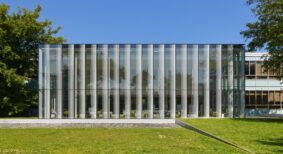Affordability and a generous supply of vacant brick-and-beam architecture have helped Hamilton draw a growing share of creative industries — facts that the owners of a historic downtown manufacturing facility are now actively promoting to Toronto urbanists and investors. Dubbed an “exploration” of the former Cannon Knitting Mills’ potential, the Toronto chapter of the Urban Land Institute (ULI) has scheduled a road trip next week for a tour and an evening of discussion in the sprawling structure’s empty boiler room.
“Hamilton has become one of the most exciting stories in the GTHA (Greater Toronto and Hamilton Area) and the Cannon Knitting Mills symbolize this city’s amazing revitalization narrative,” asserts Richard Joy, ULI Toronto’s executive director. “As a body that is focused on the health and future of our cities, we wanted to conceive of a way to get our membership into this building and get them thinking of its future.”
Hamilton Realty Capital Corporation purchased the 110,000-square-foot complex in 2011, saving it from threatened demolition. Consisting of five linked structures built between 1854 and 1950, the owners suggest the former Mills could accommodate a mix of residential, retail, office, classroom, studio and gallery space, and even a light industrial venture such as micro-brewery. Yet, thus far, few prospective tenants have emerged.
“Inviting the ULI’s membership into the space will hopefully spark their imagination, and get people thinking towards a viable future,” says Glen Norton, manager of urban renewal for the city of Hamilton.
The activities begin with a tour of some of the city’s notable redevelopment projects, including the Royal Connaught and the waterfront district. Later discussion will be animated with input from Robin Kay, president of the Fashion Design Council of Canada; Rob Spanier, president of Live, Work, Learn, Play; David Premi of dpai architecture and interiors; Tim Protocic, founder of Supercrawl; and Julian Smith, dean of the Willowbank School of Restoration.






